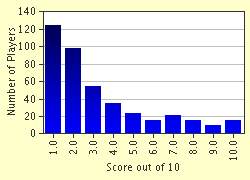Quiz Answer Key and Fun Facts
1. Enea Silvio Piccolomini, Pope Pius II, between 1460 and 1465, patronized the urban transformation of the small village of Corsignano, not far from Siena, into a renaissance 'ideal city', better known as:
2. Donato Bramante, probably around 1502, designed and built in Rome a 'tempietto', a little domed circular church, known as:
3. After working in Saint Peter's Cathedral, Michelangelo planned and completed an over-elevated square, which was soon to become the center of Rome's civil power. What was it called?
4. Antonio Averlino, sculptor, architect, and writer of a 'Treaty of Architecture', is also and better known as:
5. An easy one: what is the complete name of the author of the dome of the Church of Santa Maria del Fiore in Florence?
6. Not too far from the Po river and Mantua (present-day Lombardy), lies a village that was built to become the 'New Rome'. This utopian city, still almost perfectly preserved, was planned in 1554 by Vespasiano Gonzaga:
7. What was Michelangelo's family name?
8. In 1559, before moving from Florence to Rome, Michelangelo planned and completed a famous library:
9. What is Giulio Romano's best known piece of architecture, completed in 1534?
10. Andrea di Pietro is better known as:
Source: Author
itageographer
This quiz was reviewed by FunTrivia editor
looney_tunes before going online.
Any errors found in FunTrivia content are routinely corrected through our feedback system.


